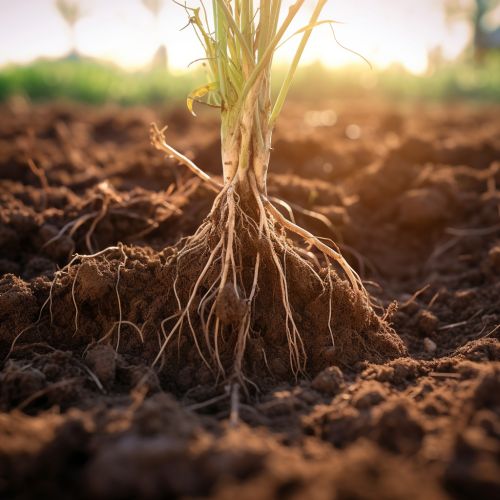Root Exudates
Introduction
Root exudates are a diverse range of compounds secreted by plants into the rhizosphere, the region of soil directly influenced by root secretions and associated soil microorganisms Learn more about Rhizosphere. These compounds, which include sugars, amino acids, organic acids, vitamins, nucleotides, and secondary metabolites, play a crucial role in plant-microbe interactions, nutrient acquisition, and soil structure formation.


Composition and Production of Root Exudates
The composition of root exudates is highly variable and depends on numerous factors, including plant species, age, and physiological status, as well as environmental conditions such as nutrient availability, soil type, and microbial community composition.
Exudates are produced by active secretion processes in root cells, involving the transport of compounds across the plasma membrane and cell wall. The secretion of these compounds is facilitated by a variety of transport proteins, including ATP-binding cassette (ABC) transporters and multidrug and toxin extrusion (MATE) transporters Learn more about Transport Proteins.
Role in Plant-Microbe Interactions
Root exudates play a pivotal role in shaping the rhizosphere microbiome, the community of microorganisms living in close association with plant roots. They can act as chemoattractants, drawing beneficial microbes towards the root, or as antimicrobial agents, inhibiting the growth of pathogenic organisms.
Certain compounds in root exudates, known as signaling molecules, can also mediate communication between plants and microbes. For example, flavonoids secreted by legume roots can signal to rhizobia bacteria to initiate the formation of nitrogen-fixing nodules Learn more about Nitrogen Fixation.
Role in Nutrient Acquisition
Root exudates can enhance plant nutrient acquisition in several ways. Organic acids and chelating agents can solubilize nutrients that are otherwise unavailable to plants, such as phosphorus and iron. Additionally, root exudates can stimulate the activity of soil microorganisms that contribute to nutrient cycling, thereby increasing the availability of nutrients like nitrogen and sulfur.
Role in Soil Structure Formation
Root exudates contribute to soil structure formation through a process known as rhizodeposition. This involves the deposition of organic compounds into the soil, which can stimulate microbial activity and promote the aggregation of soil particles.
Certain root exudates, particularly polysaccharides, can also directly bind soil particles together, forming stable aggregates that improve soil structure and water-holding capacity Learn more about Soil Structure.
Conclusion
Root exudates are a critical component of the rhizosphere, influencing plant-microbe interactions, nutrient acquisition, and soil structure formation. Understanding the composition and functions of root exudates can provide valuable insights into plant health and productivity, as well as soil fertility and sustainability.
